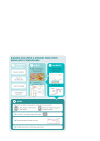'Turning the tide' on hyperglycemia in pregnancy: insights from multiscale dynamic simulation modeling
- PMID: 32475837
- PMCID: PMC7265040
- DOI: 10.1136/bmjdrc-2019-000975
'Turning the tide' on hyperglycemia in pregnancy: insights from multiscale dynamic simulation modeling
Abstract
Introduction: Hyperglycemia in pregnancy (HIP, including gestational diabetes and pre-existing type 1 and type 2 diabetes) is increasing, with associated risks to the health of women and their babies. Strategies to manage and prevent this condition are contested. Dynamic simulation models (DSM) can test policy and program scenarios before implementation in the real world. This paper reports the development and use of an advanced DSM exploring the impact of maternal weight status interventions on incidence of HIP.
Methods: A consortium of experts collaboratively developed a hybrid DSM of HIP, comprising system dynamics, agent-based and discrete event model components. The structure and parameterization drew on a range of evidence and data sources. Scenarios comparing population-level and targeted prevention interventions were simulated from 2018 to identify the intervention combination that would deliver the greatest impact.
Results: Population interventions promoting weight loss in early adulthood were found to be effective, reducing the population incidence of HIP by 17.3% by 2030 (baseline ('business as usual' scenario)=16.1%, 95% CI 15.8 to 16.4; population intervention=13.3%, 95% CI 13.0 to 13.6), more than targeted prepregnancy (5.2% reduction; incidence=15.3%, 95% CI 15.0 to 15.6) and interpregnancy (4.2% reduction; incidence=15.5%, 95% CI 15.2 to 15.8) interventions. Combining targeted interventions for high-risk groups with population interventions promoting healthy weight was most effective in reducing HIP incidence (28.8% reduction by 2030; incidence=11.5, 95% CI 11.2 to 11.8). Scenarios exploring the effect of childhood weight status on entry to adulthood demonstrated significant impact in the selected outcome measure for glycemic regulation, insulin sensitivity in the short term and HIP in the long term.
Discussion: Population-level weight reduction interventions will be necessary to 'turn the tide' on HIP. Weight reduction interventions targeting high-risk individuals, while beneficial for those individuals, did not significantly impact forecasted HIP incidence rates. The importance of maintaining interventions promoting healthy weight in childhood was demonstrated.
Keywords: causal modeling; gestational diabetes mellitus; modeling; population health.
© Author(s) (or their employer(s)) 2020. Re-use permitted under CC BY. Published by BMJ.
Conflict of interest statement
Competing interests: PMK, LF, CJN and ALK were employees of ACT Health at the time of this study.
Figures



References
-
- Nankervis A, McIntyre H, Moses R, et al. . ADIPS consensus guidelines for the testing and diagnosis of gestational diabetes mellitus in Australia. Modified 2014.
-
- Australian Institute of Health and Welfare National maternity data development project: diabetes mellitus during pregnancy—Research brief No. 2. cat. No. per 75. Canberra: Australian Institute of Health and Welfare, 2016.
-
- Lee I-L, Maple-Brown L. Diabetes in pregnancy: worldwide perspective. Springer Handbook of Nutrition and Pregnancy, 2018: 387–400.
-
- Hod M, Kapur A, Sacks DA, et al. . The International Federation of Gynecology and Obstetrics (FIGO) Initiative on gestational diabetes mellitus: A pragmatic guide for diagnosis, management, and care#. Gynecology 2015. - PubMed
-
- Australian Institute of Health and Welfare Diabetes in pregnancy 2014–2015, Bulletin 146. Canberra: Australian Institute of Health and Welfare, 2019.
Publication types
MeSH terms
LinkOut - more resources
Full Text Sources
Medical
